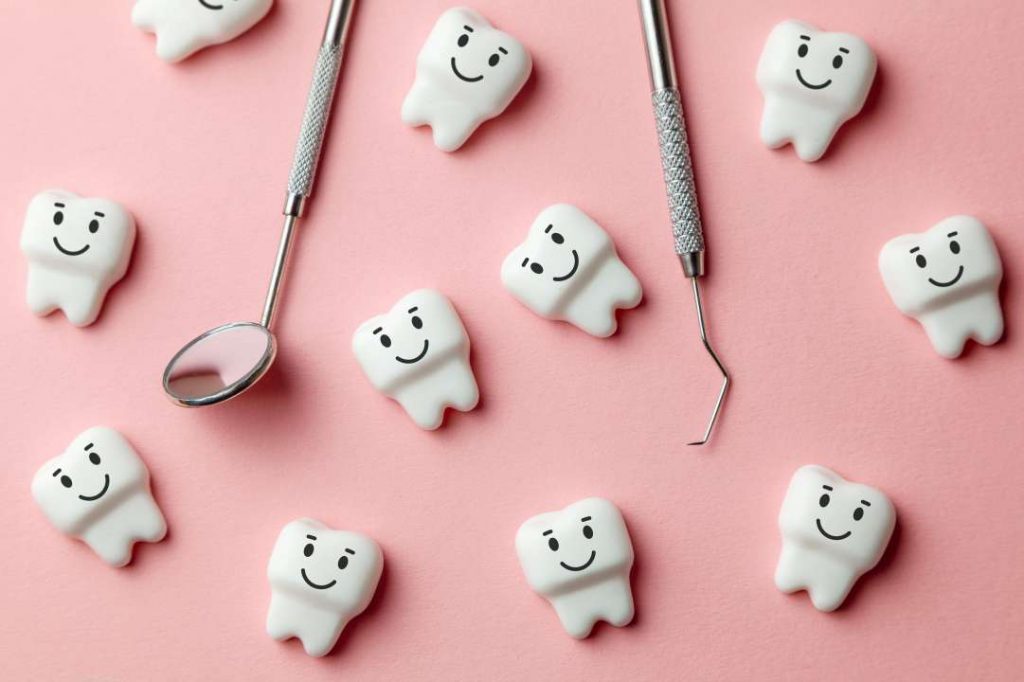Getting to the Root of Root Canals: What Are They and Why Do They Happen
If you’re in need of an endodontic procedure (root canal), you’re not alone. According to the American Association of Endodontists, more than 15 million endodontic procedures are performed every year. For those who may not be familiar with what a root canal entails, it is a procedure whereby a dentist or endodontist removes inflamed or infected pulp encased inside of the tooth or the dead debris of such former remnants. Next, the inside of the root canal is cleaned, shaped and internally filled. From there, a dental impression, which is a negative imprint of hard and soft tissues in the mouth, is used to create a crown that will cover the tooth. In this article, we will take a closer look at what this type of dentistry entails and why it may be needed.
The Anatomy Of A Tooth
To help put into context why a root canal may be needed, it helps to understand the anatomy of a tooth. Inside your tooth, beneath a harder layer of dentin, is a softer tissue referred to as pulp that contains blood vessels, nerves, and connective tissues that internally nourishes the tooth as it develops. However, once the tooth has matured, it can continue to survive in the mouth even without the pulp as long as the tissues surrounding it are healthy.
When Does A Root Canal Become Necessary?
Now that we have a general understanding of the anatomy of a tooth, let’s take a moment to identify when a root canal may be needed. Dentistry involving a root canal becomes necessary when the pulp inside of the root canal either becomes infected or inflamed. Either of these two scenarios can be the result of deep decay, repeated dental procedures on the same tooth, or a severe crack in the tooth which allow for the invasion of bacteria to this innermost cave like system. It is also important to note that poor oral hygiene can lead to cavities and decay, which, in turn, can make a root canal necessary as well. The same applies to trauma to the tooth that results in pulp damage. Lastly, it should be noted that you may experience severe pain or, worse yet, an abscess if pulp inflammation or infection is not corrected via root canal therapy. Some of the more common symptoms of a tooth that may need a root canal include
• Sensitivity to heat or cold when severe and irreversible
• Pain
• A tooth that feels tender while chewing
• Tooth discoloration
• Swollen gum tissue surrounding the tooth
While these are some of the more common signs and symptoms, some individuals may not experience any symptoms at all, hence the need for routine dental exams. Or they perceive they are past the problem as a dead tooth often has no feeling until pressure created pain becomes more severe from multiplying bacteria. That said, if you’re experiencing any of these symptoms or haven’t been seen by a dentist in a while, don’t hesitate to schedule an appointment with a dental care Saskatoon practice as soon as possible.
What To Expect During A Root Canal Procedure With A Dental Care Saskatoon Practice?
In most cases, Saskatoon dentists will perform a patient’s root canal in two visits. The initial visit includes taking an x-ray of the affected tooth to confirm a root canal is, in fact, the best course of treatment. Assuming a root canal is needed, the practitioner will start the procedure by injecting the tissue surrounding the tooth with local anesthetic. From there, a dental dam is used to protect the affected tooth from saliva and other debris while the practitioner makes an opening in the crown of the tooth. After the opening has been made, the dentist or endodontist will use specialized dental instruments to remove the pulp or remaining infected debris and also clean and shape the root canal before filling it with a biocompatible material, which is used to seal the roots of the canal.
Is A Second Visit Always Necessary?
Some dental clinic Saskatoon practices can complete the entire root canal procedure in one office visit while others may require that you schedule a follow-up visit. Most often additional visits are needed to protect the tooth from further or repeated breakdown with a permanent crown. This will be attached to the affected tooth, after it is created and then inspected by your dental clinic Saskatoon practitioner. In the interim, your dentist will most likely place a temporary crown over the affected tooth and remind you to maintain good oral hygiene to reduce the risk of the tooth becoming reinfected. When you return for another visit, the permanent crown will be cemented to the damaged tooth to restore its full function.
Pediatric Dentist Saskatoon
Of course, types of root canal therapy is not only for adults. If your child is experiencing any of the symptoms detailed in this article, consider scheduling an appointment with a pediatric dentist Saskatoon practice that can help you determine whether or not your child could benefit from a root canal Saskatoon procedure.
In summation, a root canal Saskatoon procedure is a great way to maintain the function of a tooth that has become damaged by either decay or trauma.




